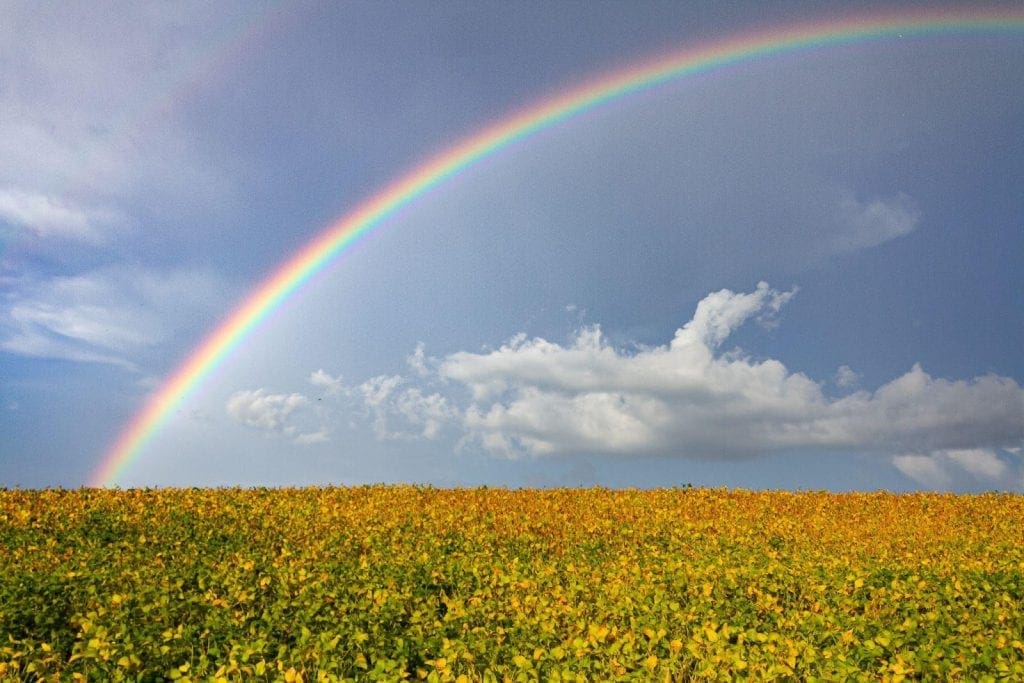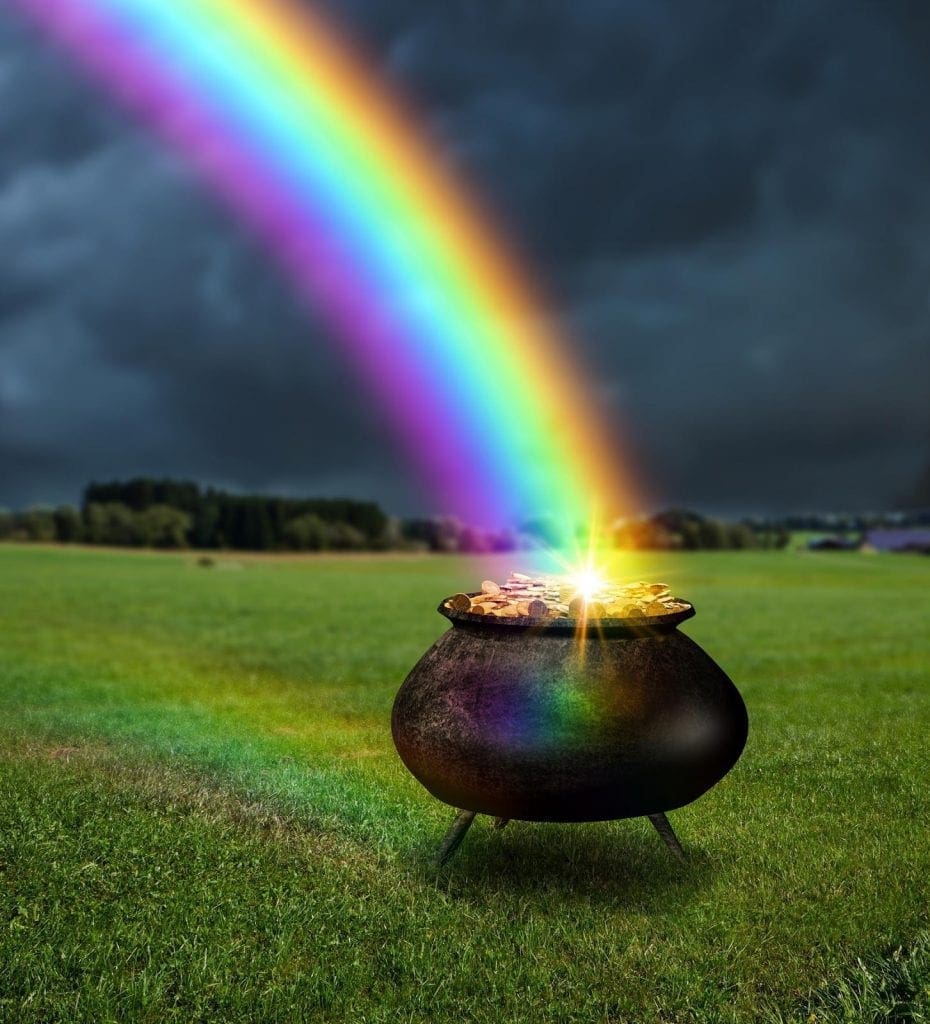
We all know that rainbows come after the rain, but what exactly are rainbows? How do they work and where did the story about the pot of gold at the end of the rainbow come from?
In this article we’ll share some answers to these questions.

Rainbows are meteorological phenomena. They are also an optical illusion; rainbows don’t actually exist in any one place. Their appearance depends entirely on the position and direction of the light source (usually the sun), the clouds, and where you’re standing in relation to them.
A rainbow is actually a full circle, but from the ground, only half of the rainbow can be seen. In an aeroplane, if the conditions are right, you can sometimes see the full circular rainbow.
How are rainbows formed?
Rainbows need certain weather conditions to form—specifically a light source and water droplets in the air. This is why they usually appear after it has been raining. If you’ve ever run around in sprinklers or watered the garden, you might’ve seen rainbows forming in the water drops.
The sun, or another light source, must be behind you, and the sky must be clear from clouds for you to be able to see a rainbow.
Although it looks like sunlight is one colour (white), it is actually made up of many different colours of light combined. Light travels through substances in waves, and, when white light from the sun enters a water droplet, these waves slow down causing the light wave to bend. This is known as refraction.
If it hits the drop at just the right angle, the refracted light is reflected off the back of the droplet instead of passing straight through it. It travels back the way it came and when it emerges from the droplet once more, the light spreads out even more and separates into its component colours. This is called dispersion, and it takes place because the waves that make up the component colours of white light all have different wave sizes, known as wavelengths.
Depending on its wavelength, each colour of light bends to a greater or lesser extent as it emerges from the droplet. Red light has the longest wavelength and bends the least of all, whereas violet light has the shortest wavelength and bends the most.
This not only gives the rainbow its colours, but also ensures that they are always displayed in the same order.
The seven visible colours of the rainbow always appear as red, orange, yellow, green, blue, indigo, violet. There are also thousands of other colours and shades invisible to the human eye.
The size of a rainbow is determined by the water droplets’ refractive index, which is a measure of how much the light waves slow down as they enter the water droplets. A water droplet with a higher refractive index will result in a rainbow with a smaller radius. For example, saltwater has a higher index than freshwater, so sea spray rainbows are smaller than freshwater rainbows.
Sometimes, if you’re really lucky, you can see two rainbows in the sky at the same time. The second rainbow, which sits above the primary rainbow, is usually fainter and is the result of a second reflection inside the droplet. The “re-reflected” light leaves the droplet at a different angle, resulting in a reversed rainbow with violet on the top and red on the bottom.
Where did this common folklore tale come from? The origins of the myth that there is a pot of gold at the end of the rainbow are unclear. Several tales include this idea, and all of them involve leprechauns, but there are multiple versions of how the gold ended up there.
A fairly common tale concerns Vikings. After invading Ireland, the Vikings stole gold and jewels from the people and buried the treasure in undisclosed locations. When they left, leprechauns—who are seen in folklore as distrusting of humans—buried the Vikings’ plundered gold at the bottom of rainbows, so humans could never get to it.

The tales were so common that the phrase a pot of gold at the end of the rainbow has become an idiom referring to hard-to-achieve dreams. And finding a pot of gold means realising your hopes and dreams.
Chemwatch is here to help
For help with your dreams of achieving the gold standard of chemicals management, look no further than Chemwatch. With over 30 years of experience, Chemwatch staff are here to help you with your labelling, SDS, Heat Mapping, and Risk Assessment needs. For more information on any of our services, or to see how we can help you, please contact us on 9573 3100 or at sa***@*******ch.net.
Sources: